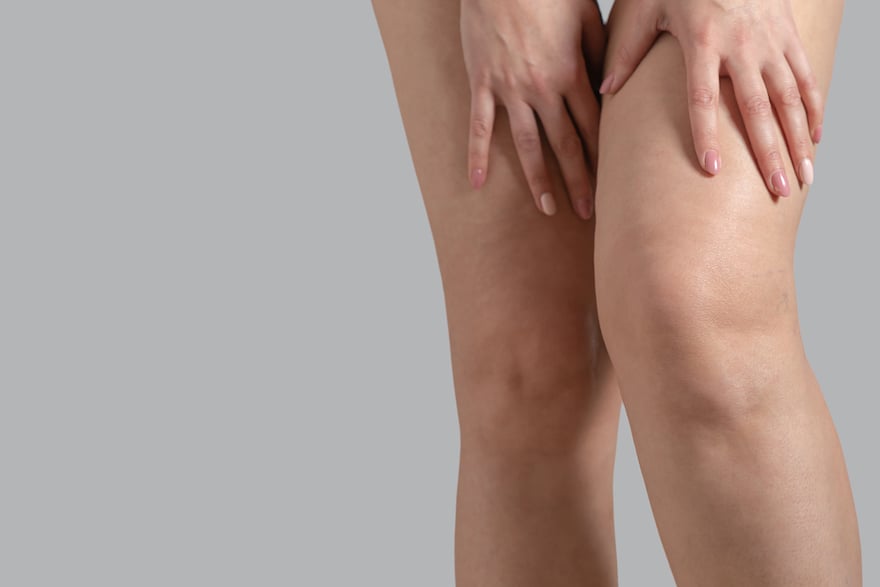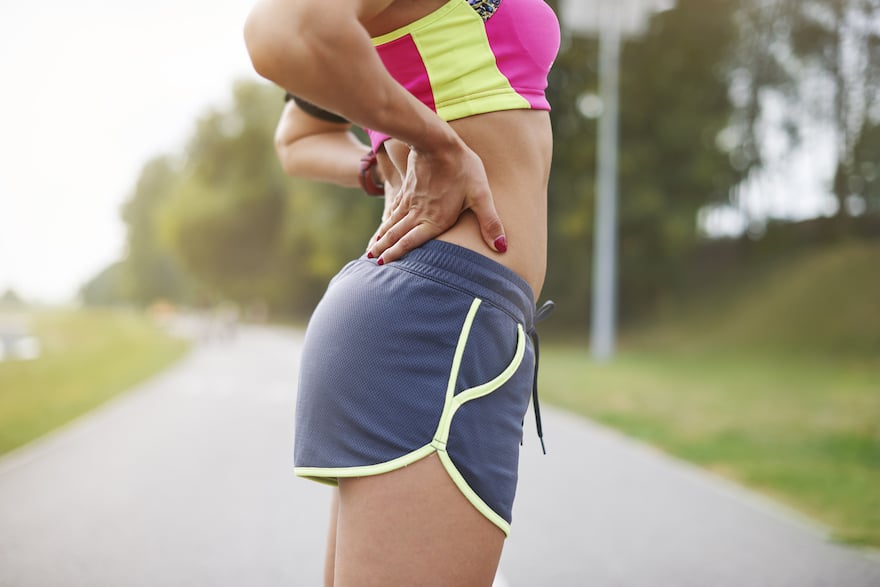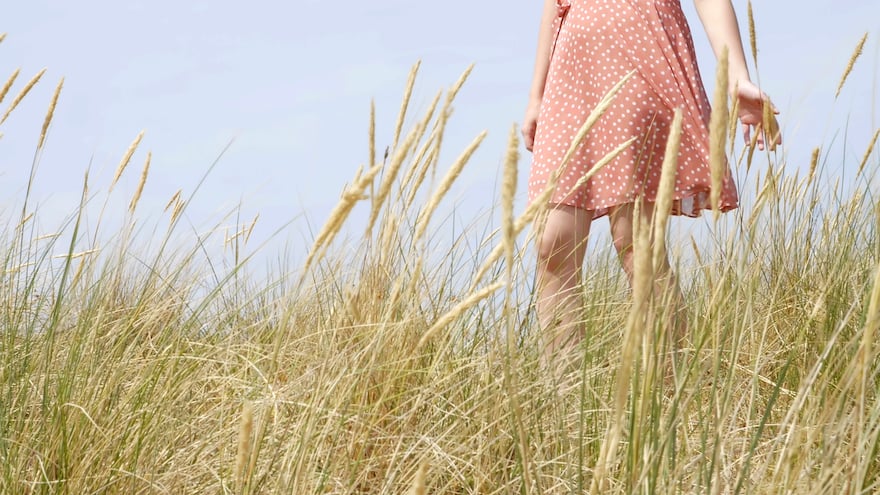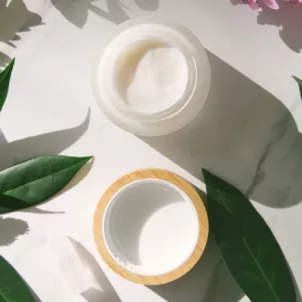Wondering how to prevent chafing? We spoke to experts to find out everything you need to know–from what it is to how to treat it and how to stop it from coming back for good.
We’ve all been there: You’re wearing a short pair of shorters or a shorter skirt and upon working out or walking, the skin on your inner thighs starts to sting (and maybe even feel raw). As your skin continues to rub against itself, the feeling only intensifies. This type of skin irritation is almost always caused by something known as chafing, which is simply the result and culmination of friction, excess moisture, and an irritating fabric. It commonly happens on your inner thighs, but it can happen in other places on your body too.
Wondering how to prevent chafing? We spoke to experts to find out what chafing is, how to treat it, and how to stop it from happening altogether.
What is Chafing?

Chafing refers to a certain type of skin irritation that typically results from rubbing or friction. It most often occurs in areas where two skin surfaces tend to rub together that are also prone to moisture buildup. The most common occurrences are inner thigh chafing, armpit chafing, groin chafing, and chafing under the breasts.
You might see a chafing rash, chafing bumps, or notice it from the stinging pain that can accompany it, or simply redness and discoloration of the skin. “Chafing results from friction or frequent rubbing of the skin and as a result is more likely to occur in areas that are in close contact with other areas of skin, fabrics, or moisture—such as the thighs, the breasts, the buttocks, and the underarms,” explains Marisa Garshick, MD, FAAD, a board-certified dermatologist at Medical Dermatology & Cosmetic Surgery (MDCS) in New York City.
When the skin rubs together or a certain material rubs up against the skin repeatedly, it can trigger a type of irritation of the skin. If this occurs on a chronic, or consistent, basis, the chafing may trigger inflammation, which Dr. Garshick explains can lead to redness and discomfort, including stinging or itching of the skin.
What Factors Make Chafing Worse?
There are many culprits that can cause chafing or make the symptoms worse. The moisture content of the skin is one of the most important contributing factors to chafing, according to Erum Ilyas, MD, a dermatologist at Schweiger Dermatology in King of Prussia, PA. “Sweat, heat, and humidity from the environment and/or water incompletely dried after a shower or swimming are common triggers,” she says.
How to Prevent Chafing

With that in mind, you can prevent chafing by following these tips to reduce moisture and friction.
1. Pay Attention to Seams.
“Clothing contributes to horizontal shearing forces that trigger friction, in particular coarse or abrasive textiles,” says Dr. Ilyas. While workout gear has historically been a big contributor to chafing, newer designs are more skin-friendly. “Athletic gear is increasingly focused on utilizing textiles with smoother surfaces as well as carefully placing seams outside of the points of friction to reduce the shearing forces triggered by these points of contact.”
2. Choose Quick-Drying Fabrics.
Wearing fabrics that tend to hold in more moisture, like cotton, wool, and velvet can make you more likely to chafe. While some of these materials are technically “breathable,” they take a longer time to dry—and the moisture only exacerbates chafing. For this reason, it’s a good idea to opt for sweat-wicking fabrics that allow your skin to breathe and don’t retain as much moisture, such as polyester, polypropylene, and merino wool (which is much thinner and smoother than traditional wool). Also, Dr. Garshick recommends making sure that your fabrics are not too loose, as this may allow the skin to rub together and lead to friction-related skin changes.
3. Use a Barrier Cream.
One of the best tools to keep in your arsenal to help prevent chafing experiences is a skin barrier protectant cream. “Vaseline, Aquaphor, and Desitin can work to both prevent chafing, but also help to treat the skin that has been irritated as a result of chafing,” explains Dr. Garshick. If you’re a parent, you probably know these three brands well, as they also come to the rescue to help reduce diaper rashes in babies. “When the skin experiences chafing, it disrupts the skin barrier, and using a barrier cream can help the skin recover by protecting it from further external irritants.”
It’s a good idea to keep these on hand so that you can apply them during times when chafing might be more probable, such as a hot day or before a hard-earned workout. For an easy on-the-go option, try Megababe’s Thigh Rescue ($14) or Body Glide’s Body balm ($11).
4. Shower After Your Workouts
If you exercise and don’t shower immediately after, you might also experience chafing shortly after. This is due to the moisture buildup from sweat or the humidity in the environment in which you were working out. “Water sitting on the surface of the skin weakens the integrity of the skin barrier combined with frictional forces from repeated movements, such as from running, walking, or weight lifting,” says Brendan Camp, MD, a Manhattan-based dermatologist at MDCS Dermatology
How to Treat Chafing

Even with the best-laid plans, chafing can happen. Luckily, there are several tried-and-true solutions to heal chafing. Here, dermatologists share their best solutions for how to treat chafing.
1. Clean the Affected Area Well.
To treat an area of skin affected by chafing, Dr. Camp recommends first gently cleaning it with warm water and mild cleanser. “Chafed areas are prone to infection because the skin barrier is compromised, so it is important to keep it clean,” he says.
2. Apply a Cortisone Cream.
You might have a cortisone cream lying around your house, as this type of over-the-counter medication can help relieve all sorts of inflammation of the skin. Since the chafing can often result in redness, which may cause itching or burning, Dr. Garshick likes to recommend cortisone cream as a layer of defense for her chafing-suffering patients. “A topical steroid cream such as a cortisone cream may be helpful to reduce sensitivity of the skin,” she adds.
3. Try Aloe Vera.
If you have aloe vera lying around, whether it’s straight from a plant source or in a gel form, it can help alleviate your chafing symptoms since it is a calming agent for irritated skin. When purchasing aloe products, Dr. Camp recommends looking for a pure aloe vera formula like Amara Beauty Aloe Vera Gel ($18). Other products that contain aloe vera may also contain ingredients that could be irritating on your already irritated skin.
4. Give Your Skin Time to Heal.
Remember to give your skin time to heal. “Continued skin aggravation will prevent the skin from repairing itself, possibly making symptoms worse, and can predispose it to infection,” says Dr. Camp. “If your skin is not healing like it should, reach out to a board-certified dermatologist for assistance.”
5. Make a Visit to See Your Derm.
In some cases, a prescription may be required to help relieve the skin changes that are associated with chafing, according to Dr. Garshick. “Additionally, in some cases, what may seem like it is related to chafing may actually be related to something different so it can help to have the skin evaluated by a dermatologist to determine the exact condition,” she adds. If your attempts to alleviate your skin chafing are not fruitful, consider dialing up your dermatologist and making an appointment.









